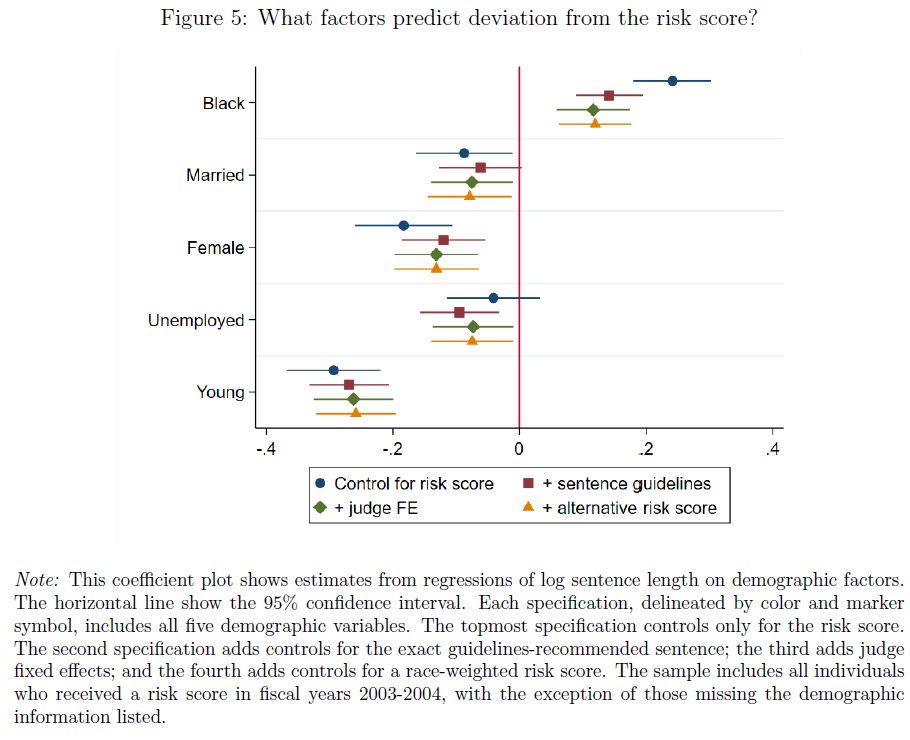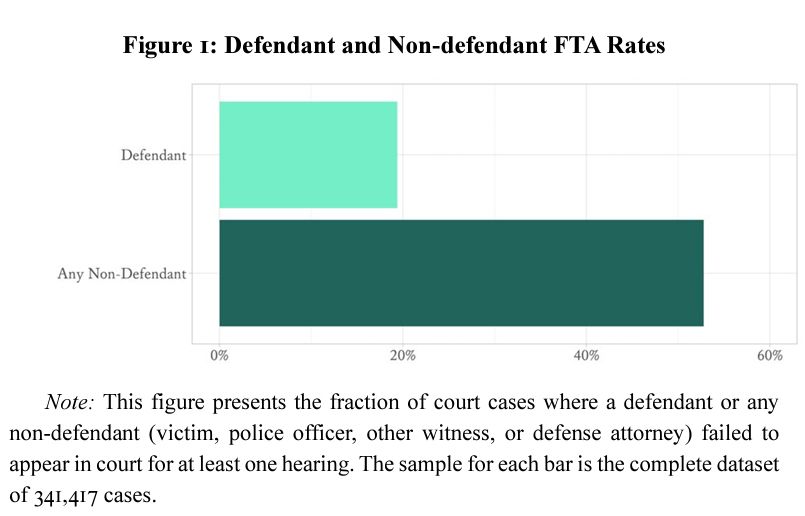professor of law
professor of economics (by courtesy)
UVA
https://sites.google.com/view/megan-stevenson/home

Sounds complicated? That’s the point. 13/

Sounds complicated? That’s the point. 13/



According to this metric, Black defendants gained most: 33% increase versus 11% increase. 5/

According to this metric, Black defendants gained most: 33% increase versus 11% increase. 5/
In this example, both Black and White defendants saw a 10 p.p. increase in nonmonetary release as a result of the intervention. 4/

In this example, both Black and White defendants saw a 10 p.p. increase in nonmonetary release as a result of the intervention. 4/

We....
1) develop a framework for identification w/ multiple treatments in a judge IV design
2) find that felony conviction (without incarceration) increases recidivism relative to dismissal
with @johneric.bsky.social Aurelie Ouss @winnievd.bsky.social and Kamelia Stavreva
1/

We....
1) develop a framework for identification w/ multiple treatments in a judge IV design
2) find that felony conviction (without incarceration) increases recidivism relative to dismissal
with @johneric.bsky.social Aurelie Ouss @winnievd.bsky.social and Kamelia Stavreva
1/
People forced to sleep on the ground 2 feet from the toilet

People forced to sleep on the ground 2 feet from the toilet
osf.io/prh8j

osf.io/prh8j
www.socialscienceregistry.org/trials/11730

www.socialscienceregistry.org/trials/11730
www.annualreviews.org/content/jour...

www.annualreviews.org/content/jour...
leiterlawschool.typepad.com/leiter/2024/...

leiterlawschool.typepad.com/leiter/2024/...




We look at what happens when human judges are given algorithmic risk assessments to help determine who to incarcerate. 1/
www.aeaweb.org/articles?id=...
papers.ssrn.com/sol3/papers....
#econsky #polisky

We look at what happens when human judges are given algorithmic risk assessments to help determine who to incarcerate. 1/
www.aeaweb.org/articles?id=...
papers.ssrn.com/sol3/papers....
#econsky #polisky
It surveys 50+ years of randomized control trials in criminal justice and shows that almost no interventions have lasting benefit -- and the ones that do don't replicate in other settings. 1/
www.bu.edu/bulawreview/...
#econsky #polisky #metascience #philsci

It surveys 50+ years of randomized control trials in criminal justice and shows that almost no interventions have lasting benefit -- and the ones that do don't replicate in other settings. 1/
www.bu.edu/bulawreview/...
#econsky #polisky #metascience #philsci
The dismissal rate is twice as high for cases where a witness fails to appear at least once. This strong relationship persists after controlling for charge, criminal record, and demographics. 3/

The dismissal rate is twice as high for cases where a witness fails to appear at least once. This strong relationship persists after controlling for charge, criminal record, and demographics. 3/
Failure-to-appear is not a defendant problem, it’s a systemic problem 2/

Failure-to-appear is not a defendant problem, it’s a systemic problem 2/
There’s a massive system to get defendants to appear in court, including bail and pretrial detention.
Our study shows it’s not defendants who miss court most, it’s other required actors: police officers, lawyers, and civilian witnesses. 1/
papers.ssrn.com/sol3/papers....

There’s a massive system to get defendants to appear in court, including bail and pretrial detention.
Our study shows it’s not defendants who miss court most, it’s other required actors: police officers, lawyers, and civilian witnesses. 1/
papers.ssrn.com/sol3/papers....



